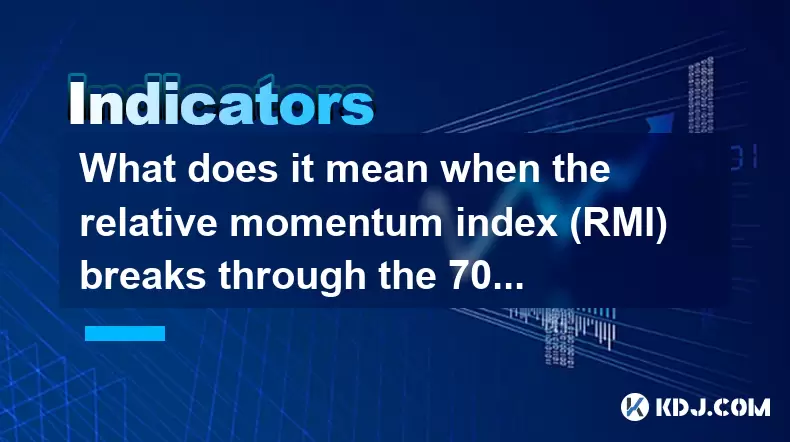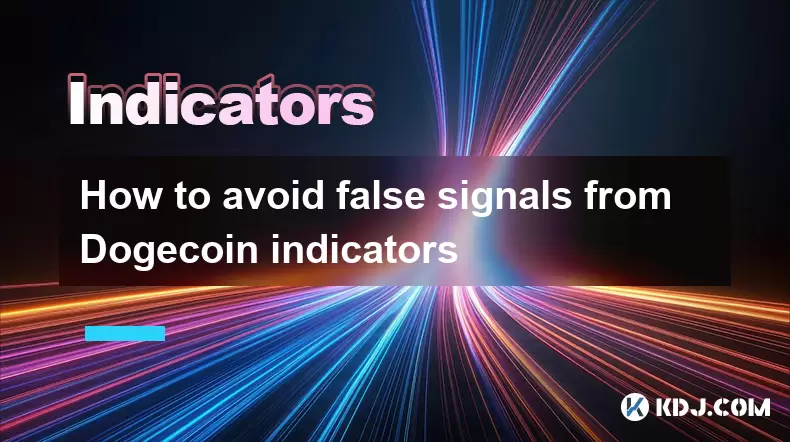-
 Bitcoin
Bitcoin $108,250.0992
0.11% -
 Ethereum
Ethereum $2,515.9404
0.03% -
 Tether USDt
Tether USDt $1.0003
0.00% -
 XRP
XRP $2.2166
-0.19% -
 BNB
BNB $656.5904
0.29% -
 Solana
Solana $147.4122
-0.58% -
 USDC
USDC $1.0000
-0.01% -
 TRON
TRON $0.2830
0.06% -
 Dogecoin
Dogecoin $0.1641
0.27% -
 Cardano
Cardano $0.5739
-0.19% -
 Hyperliquid
Hyperliquid $39.1463
-0.11% -
 Sui
Sui $2.8882
-0.02% -
 Bitcoin Cash
Bitcoin Cash $487.6428
0.31% -
 Chainlink
Chainlink $13.2097
0.07% -
 UNUS SED LEO
UNUS SED LEO $9.0308
0.10% -
 Avalanche
Avalanche $17.8608
0.13% -
 Stellar
Stellar $0.2379
-0.06% -
 Toncoin
Toncoin $2.7400
-0.39% -
 Shiba Inu
Shiba Inu $0.0...01144
-0.36% -
 Litecoin
Litecoin $87.5467
0.66% -
 Hedera
Hedera $0.1538
0.22% -
 Monero
Monero $315.5479
0.36% -
 Dai
Dai $1.0000
0.00% -
 Polkadot
Polkadot $3.3523
-0.71% -
 Ethena USDe
Ethena USDe $1.0003
0.01% -
 Bitget Token
Bitget Token $4.3960
-1.03% -
 Uniswap
Uniswap $7.2663
4.19% -
 Aave
Aave $272.8619
2.04% -
 Pepe
Pepe $0.0...09676
-0.18% -
 Pi
Pi $0.4586
-2.87%
What does it mean when the relative momentum index (RMI) breaks through the 70 overbought zone?
The Relative Momentum Index (RMI) helps traders identify overbought conditions above 70, signaling potential pullbacks, but should be confirmed with other indicators for reliable trading decisions.
Jul 02, 2025 at 09:15 pm

Understanding the Relative Momentum Index (RMI)
The Relative Momentum Index (RMI) is a technical analysis indicator that combines elements of both the Relative Strength Index (RSI) and the Momentum Indicator. It was developed to provide traders with a more nuanced view of market conditions by measuring not only price changes over time but also the momentum behind those changes.
Unlike RSI, which calculates the average gain and loss over a specific period (usually 14), the RMI introduces a second parameter — the number of periods used for momentum calculation. This dual-period approach allows the RMI to filter out some of the noise found in traditional RSI readings, offering potentially more reliable signals when analyzing overbought or oversold levels.
The standard RMI settings are often 5 for momentum and 20 for RSI, although these can be adjusted depending on the trader's strategy and market conditions.
What Does the Overbought Zone Indicate?
The RMI typically oscillates between 0 and 100, with key threshold levels at 30 and 70. When the RMI rises above 70, it enters what is known as the overbought zone. In technical analysis, an overbought condition suggests that an asset may have been bought aggressively and could be due for a pullback or reversal.
However, being in the overbought territory does not automatically mean that the price will reverse. Strong trends can sustain overbought conditions for extended periods, especially during bullish market phases or strong accumulation by institutional players.
A reading above 70 indicates that buying pressure has been dominant recently, but it also raises the possibility that short-term traders may start taking profits.
Interpreting a Breakthrough Above the 70 Level
When the RMI breaks through the 70 level, it signifies that momentum has surged past a critical threshold. This breakout can occur after a period of consolidation or during a sharp upward move. Traders interpret this signal differently based on context:
- If the breakout occurs within a well-established uptrend, it might indicate continued strength.
- If the breakout happens after a long rally or near resistance levels, it could suggest exhaustion in buying pressure.
It’s important to analyze volume and price action alongside RMI to confirm whether the breakout is meaningful or simply a false signal.
Traders should look for divergence between price and RMI to assess the likelihood of a trend continuation or reversal.
How to Use RMI Breakouts in Cryptocurrency Trading
In the volatile world of cryptocurrency trading, timing entries and exits is crucial. Here’s how you can incorporate RMI breakouts into your trading plan:
- Identify the current trend using moving averages or support/resistance zones before interpreting RMI signals.
- Look for confluence with other indicators like MACD or Bollinger Bands to validate potential reversals.
- Monitor candlestick patterns that may form around the RMI breakout level to determine if buyers or sellers are gaining control.
- Set stop-loss orders just below recent swing lows if entering a short position after an overbought breakout.
- Consider scaling into positions rather than committing full capital immediately upon RMI crossing 70.
Remember, no single indicator works in isolation. The RMI should be part of a broader analytical framework.
Common Misinterpretations of RMI Signals
One of the most common mistakes traders make is treating RMI overbought levels as automatic sell signals. In fast-moving crypto markets, prices can remain overbought for long stretches during strong rallies.
Another pitfall is ignoring the timeframe. A daily chart showing RMI above 70 might still reflect a healthy trend, while the same reading on a 1-hour chart could signal a short-term correction.
Additionally, traders sometimes overlook the importance of adjusting RMI parameters to suit different cryptocurrencies. Volatile altcoins may require different settings compared to stable blue-chip tokens like Bitcoin or Ethereum.
Always backtest your RMI-based strategies across multiple market cycles before deploying real capital.
Frequently Asked Questions
Q: Can the RMI stay above 70 for a long time?
Yes, especially during strong uptrends or parabolic moves. The RMI reflects momentum, not necessarily overvaluation. Extended stays above 70 do not guarantee a reversal.
Q: Should I always take a trade when RMI crosses above 70?
No. You should wait for additional confirmation such as bearish candlesticks, negative divergences, or breakdowns from key support levels before considering a trade.
Q: How does RMI differ from RSI in overbought interpretation?
RMI incorporates momentum into its calculation, making it less sensitive to small price fluctuations. As a result, RMI overbought readings may carry more weight than RSI in certain scenarios.
Q: Is RMI effective for all cryptocurrencies?
Its effectiveness varies depending on the volatility and liquidity of the asset. Highly volatile altcoins may produce more false signals, requiring parameter adjustments or supplementary filters.
Disclaimer:info@kdj.com
The information provided is not trading advice. kdj.com does not assume any responsibility for any investments made based on the information provided in this article. Cryptocurrencies are highly volatile and it is highly recommended that you invest with caution after thorough research!
If you believe that the content used on this website infringes your copyright, please contact us immediately (info@kdj.com) and we will delete it promptly.
- XRP's Upside Potential: Analysts Bullish Despite Accessibility Concerns
- 2025-07-06 10:30:13
- Dubai Hotelier, Crypto Scam, and an Arrest in India: A Tangled Web
- 2025-07-06 10:30:13
- Bitcoin's Calm Before the Storm: ETF Inflows Surge Amidst Low Volatility
- 2025-07-06 10:50:13
- Crypto Capital Inflows: Why Qubetics, Ethereum, and SUI are Investment Coins to Watch
- 2025-07-06 10:50:13
- Bitcoin, Crypto, and Polymarket: Decoding the Crystal Ball
- 2025-07-06 11:15:22
- XRP Price Prediction: Can XRP Break the Weekly Downtrend?
- 2025-07-06 11:00:13
Related knowledge

How to spot manipulation on the Dogecoin chart
Jul 06,2025 at 12:35pm
Understanding the Basics of Chart ManipulationChart manipulation in the cryptocurrency space, particularly with Dogecoin, refers to artificial price movements caused by coordinated trading activities rather than genuine market demand. These manipulations are often executed by large holders (commonly known as whales) or organized groups aiming to mislead...

What is the significance of a Dogecoin engulfing candle pattern
Jul 06,2025 at 06:36am
Understanding the Engulfing Candle Pattern in CryptocurrencyThe engulfing candle pattern is a significant technical analysis tool used by traders to identify potential trend reversals in financial markets, including cryptocurrencies like Dogecoin. This pattern typically consists of two candles: the first one is relatively small and indicates the current...

Dogecoin monthly chart analysis for long term investors
Jul 06,2025 at 10:08am
Understanding the Dogecoin Monthly ChartFor long-term investors, analyzing the monthly chart of Dogecoin (DOGE) provides a macro view of its price behavior over extended periods. The monthly chart captures major trends, key resistance and support levels, and potential reversal zones that are crucial for strategic investment planning. Unlike daily or hou...

How to manage risk using ATR on Dogecoin
Jul 06,2025 at 02:35am
Understanding ATR in Cryptocurrency TradingThe Average True Range (ATR) is a technical indicator used to measure market volatility. Originally developed for commodities, it has found widespread use in cryptocurrency trading due to the high volatility inherent in digital assets like Dogecoin (DOGE). The ATR calculates the average range of price movement ...

How to avoid false signals from Dogecoin indicators
Jul 06,2025 at 06:49am
Understanding Dogecoin Indicators and Their LimitationsDogecoin indicators are tools used by traders to analyze price movements and make informed decisions. These include moving averages, Relative Strength Index (RSI), MACD, and volume-based metrics. However, these tools can sometimes generate false signals, especially in highly volatile markets like Do...

Dogecoin Donchian Channels strategy
Jul 06,2025 at 02:43am
What Are Donchian Channels?Donchian Channels are a technical analysis tool used to identify potential breakouts, trends, and volatility in financial markets. They consist of three lines: the upper band, which marks the highest high over a specific period; the lower band, which reflects the lowest low over the same period; and the middle line, typically ...

How to spot manipulation on the Dogecoin chart
Jul 06,2025 at 12:35pm
Understanding the Basics of Chart ManipulationChart manipulation in the cryptocurrency space, particularly with Dogecoin, refers to artificial price movements caused by coordinated trading activities rather than genuine market demand. These manipulations are often executed by large holders (commonly known as whales) or organized groups aiming to mislead...

What is the significance of a Dogecoin engulfing candle pattern
Jul 06,2025 at 06:36am
Understanding the Engulfing Candle Pattern in CryptocurrencyThe engulfing candle pattern is a significant technical analysis tool used by traders to identify potential trend reversals in financial markets, including cryptocurrencies like Dogecoin. This pattern typically consists of two candles: the first one is relatively small and indicates the current...

Dogecoin monthly chart analysis for long term investors
Jul 06,2025 at 10:08am
Understanding the Dogecoin Monthly ChartFor long-term investors, analyzing the monthly chart of Dogecoin (DOGE) provides a macro view of its price behavior over extended periods. The monthly chart captures major trends, key resistance and support levels, and potential reversal zones that are crucial for strategic investment planning. Unlike daily or hou...

How to manage risk using ATR on Dogecoin
Jul 06,2025 at 02:35am
Understanding ATR in Cryptocurrency TradingThe Average True Range (ATR) is a technical indicator used to measure market volatility. Originally developed for commodities, it has found widespread use in cryptocurrency trading due to the high volatility inherent in digital assets like Dogecoin (DOGE). The ATR calculates the average range of price movement ...

How to avoid false signals from Dogecoin indicators
Jul 06,2025 at 06:49am
Understanding Dogecoin Indicators and Their LimitationsDogecoin indicators are tools used by traders to analyze price movements and make informed decisions. These include moving averages, Relative Strength Index (RSI), MACD, and volume-based metrics. However, these tools can sometimes generate false signals, especially in highly volatile markets like Do...

Dogecoin Donchian Channels strategy
Jul 06,2025 at 02:43am
What Are Donchian Channels?Donchian Channels are a technical analysis tool used to identify potential breakouts, trends, and volatility in financial markets. They consist of three lines: the upper band, which marks the highest high over a specific period; the lower band, which reflects the lowest low over the same period; and the middle line, typically ...
See all articles

























































































